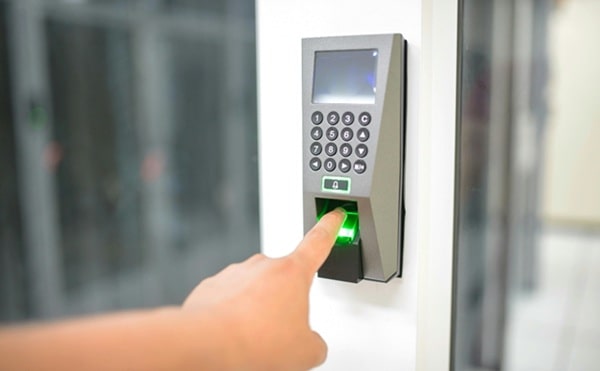There’s a silent judgment every time someone steps into your building. Before the handshake, before the meeting, before the pitch—there’s the door.
If your entry system involves a clipboard and a dried-out pen, people notice. If your receptionist has to buzz someone in from a sticky monitor, people notice. If you hand over a badge that looks like it was printed in 2009, people notice.

You can brand your company however you want, but nothing screams we don’t prioritize security like a flimsy front door experience. And in commercial real estate, where perception becomes property value, that matters more than most want to admit.
Here’s what your office entry system is really saying about you—and why it’s time to upgrade.
1. “We’re Not Serious About Security”
The harsh truth? Tenants and visitors don’t feel safe when anyone can tailgate into a building. No matter how new your HVAC system is, or how clean the elevators are, if security is performative instead of preventative, you’ve failed.
Modern access control systems do more than beep people through. They track entries, timestamp activity, restrict floor access, and log every credential that enters the building. If your space can’t do that, you’re not offering commercial-grade protection. You’re offering luck.
2. “Our Tech Is All Talk”
You can call your building “smart,” but if the entry process feels like a trip to the DMV, it undercuts the message. Most office tenants today are tech-savvy. They expect keyless, contactless, integrated access systems that align with their own digital-first workflows.
That means real-time badge deactivation. Tiered access permissions. System visibility that connects to property management software. Not some dusty key fob from a drawer that might still work for the wrong person.
This is where Avon Security Products comes in. Their range of ID badge printers, accessories, and supplies gives property managers the tools to modernize access control without expensive infrastructure changes. It’s the kind of upgrade tenants notice immediately, without even thinking about it.
3. “We Don’t Understand the Value of Trust”
People feel safer in spaces that are intentional. A clean lobby, consistent lighting, visible staff, and an access system that clearly defines who belongs and who doesn’t.
This isn’t just about protection. It’s about signaling.
When a visitor receives a professionally printed badge with their name, photo, and access level, it feels like someone thought this through. When vendors are handed ID cards that expire when their contract does, it feels like your operations are tight.
That kind of clarity builds trust. It shows your building is run by adults who have done this before.
4. “We Cut Corners Where It’s Inconvenient”
Outdated access systems aren’t always cheaper. In fact, they often cost more—lost badges, failed entry logs, after-hours rekeying, front desk staffing bloat. But because these costs are scattered and operational, they get ignored.
Modern ID badge systems reduce those inefficiencies. They automate onboarding and offboarding, centralize credentials, and eliminate messy manual work. And they make your building feel cohesive, not cobbled together.
Tenants notice when things run smoothly. They also notice when they don’t.
5. “We’re Behind”
No one wants to lease space in a building that feels like it hasn’t been updated since the last recession. And while aesthetic renovations get all the glory, functional improvements like access control have the most direct impact on day-to-day tenant experience.
Think about it: employees interact with your access system every single day. If it’s frustrating, that frustration gets projected onto your building. If it’s seamless, that smoothness becomes your brand.
In a market where vacancy rates can make or break a property’s ROI, every touchpoint counts. And yes, the door is one of them. In competitive markets like Toronto, where tenant expectations are rising and alternatives are plentiful, even small operational details can sway leasing decisions.
According to CMHC’s commercial vacancy data, office vacancy rates in the city remain in flux, putting pressure on building owners to stand out. Access systems that are modern, secure, and easy to use don’t just improve safety—they quietly boost retention by creating a seamless experience from the moment someone swipes in.
Final Thought: Your Entry System Is a Mirror
How people enter your building is how they experience your business. It’s either clean, safe, intuitive, or it’s messy, unclear, and outdated.
One makes tenants stay longer. One makes them start browsing new listings.
The difference isn’t just a software choice. It’s a brand decision.
So ask yourself: what is your current system saying?
And if the answer is “nothing good,” maybe it’s time to change the conversation, starting at the door.